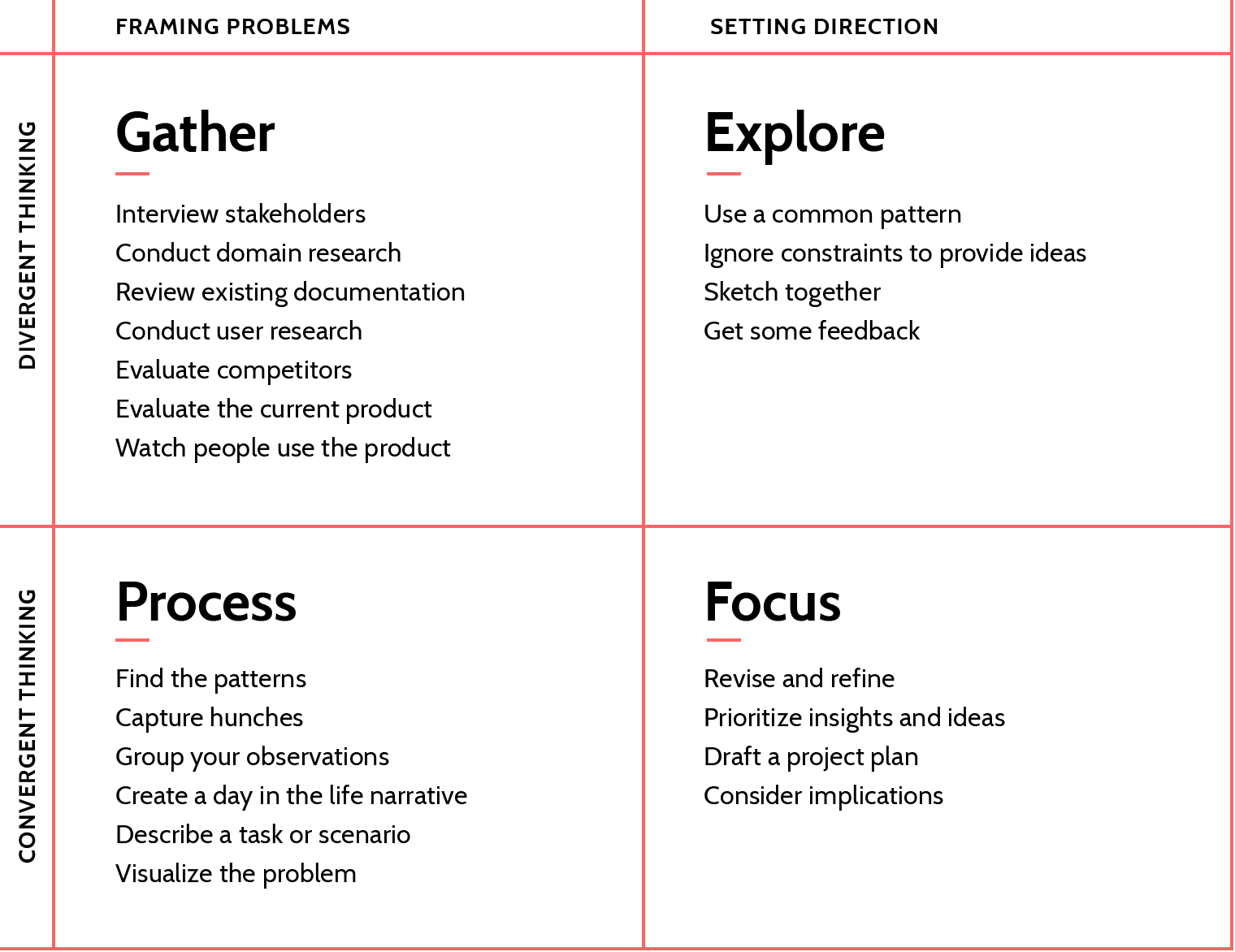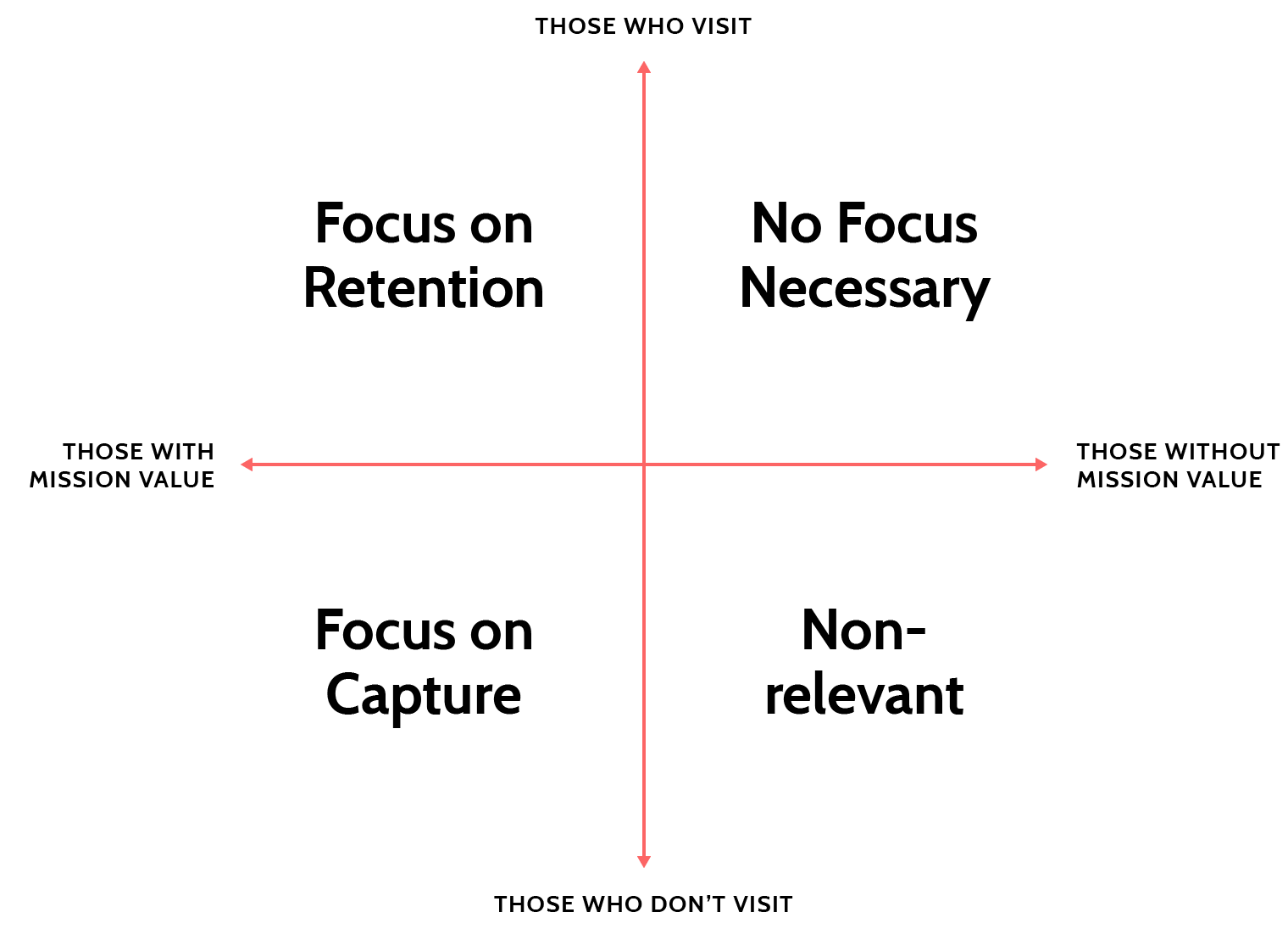Identify Your Audiences
Summary
We build websites to prompt an action or convey information to humans. Who are your humans? What are their motivations?
Does This Apply?
You always need to know the people who will be affected by your new site or project, without a doubt. In fact, unless your site is purely a vanity project, there’s no excuse for not understanding the people who will ultimately use the site.
Narrative
We’ve seen a lot of bad food ideas. Heck, we’re living it every day; this is an era, after all, in which everything is dusted with Flamin’ Hot Cheetos powder and shaped like a sushi roll. Where wrapping a taco in a Doritos shell and chasing it with radioactive-colored Mountain Dew isn’t just a challenge: it’s a way of life.
But at least we’re not living in a world that accepted Gerber Singles.
Gerber – the United States baby food company – was riding high in the 1960s, still feeling the effects of the post-war baby boom. But as birth rates dropped, the bottom line of companies like Gerber, who were still struggling to diversify beyond baby products, began to suffer.
“But what if,” Gerber thought, “baby food wasn’t just for babies?”
With this, Gerber Singles were born. They were designed to be quick and easy meals for the newly independent – like college students or single adults who had just moved into their first house – and, as an added cost benefit, they were packaged in Gerber’s existing jars.
They weren’t baby food, you see. They came in adult flavors. Beef Burgundy. Mediterranean Vegetables. Creamed Beef.
You can see where this is going. Turns out, adults don’t like eating baby food, even if it’s not called baby food. They like their Beef Burgundy to have a texture, and they like their vegetables to be multi-colored and … whole.
More than that, adults don’t like to see themselves as giving up, and Gerber Singles were a symbol for giving up. Newfound freedom, whether as a single adult or as a new college student, is about discovery and adventure, and even if those two things never happen, no one wants to admit defeat.

Episode 5: Identify Your Audiences (w/ Erika Hall)
Corey and Deane talk about Bleachers, music producers, and how understanding your audience increases effectiveness. Then, Erika Hall, author of Just Enough Research, joins the podcast to talk about interviewing the people who will visit your site — how to frame interviews, effective incentives, and the difference between researching assumptions versus learning about your users.
Welcome to the Discovery Phase
Gerber was – and still is – very good at what they do: providing baby food products that are plain enough to appeal to a wide range of developing eaters. They are experts in that field. But they are not experts in adult food. They are not experts in what the freedom-seeking new renter or college student wants for dinner.
The problem wasn’t that they swung and missed at a potential product. The problem is that they didn’t understand the fundamental differences between their existing audiences and their new audiences. And they didn’t bother to ask.
We all like to think that people are waiting on our new website with bated breath; that every page is going to be a masterpiece, and that flipping that switch is going to drive some kind of magic event. But, to most people, our website is yet another thing that someone will encounter during the day – sometimes on purpose, sometimes as an obstacle. We have to meet them at their level.
We’re not going to mince words here: building a site without knowing your audiences – without understanding why those users arrive on your site and what they want – is an exercise in arrogance. You may think it’s a way to cut costs, or to save time, or that you already know everything you want to know about the people who will visit your new website. In reality, it’s the equivalent of saying you simply don’t care about the people who are visiting your new website.
We know you care. You wouldn’t be reading this if you didn’t care.
This is the point in a project most often called “discovery,” in which we learn. Discovery can mean a lot of things, and depending on the project it can be long or short, detailed or surface-level, focused on all aspects of a product or lifecycle, or simply focused on a specific user behavior. In fact, the different directions in which a discovery phase can take can feel overwhelming to someone who simply wants to know what to do next.
These varied options are by design. In his book Practical Design Discovery1, Dan Brown maps the discovery process as a grid called the Complete Discovery Activities Matrix, in which discovery activities are plotted against two axes:
- Convergent Divergent Thinking: Are these tasks helping us dial into specifics, or are they helping us understand the wider landscape?
- Framing Problems Setting Direction: Are we setting the stage for the project or are we making decisions for next steps?
Much of this section of the book — the Discovery section — is focused on this grid, with most of the tasks and activities landing in the gather and process quadrants. We can start the discovery process by getting to know your people.

Figure 5.1: Dan Brown's Complete Discovery Activities Matrix.
Knowing Your Site Means Identifying Your Audiences
People in this world — and we mean every person — exist in two binary states, as far as your website is concerned:
- They either visit your site or they don’t.
- They provide value to your mission or they don’t.

Figure 5.2: Visitor vs. Value Grid.
We break this down to show two things. First of all, not everyone who visits your site is a mission-critical audience. In fact, not everyone who interacts with your business or organization is a mission-critical audience. This is important to remember: it’s easy to get caught up in serving everyone, but the truth is you don’t have to account for everyone.
Let’s repeat that one more time. You. Do. Not. Need. To. Account. For. Everyone.2
Two groups of people will take up the bulk of your attention: people with mission value that already visit (where the focus is on retention) and people with mission value who don’t currently visit (where the focus is on capturing their attention.) Little attention needs to be paid to site visitors who don’t fulfill any organizational or site need, and there’s zero reason to worry about those who don’t visit and don’t have any connection to your organization.
Here’s an example of determining high-level audiences. This book has been written, in part, through use of a scheduled weekly exercise at a place called The Source, a coffee shop in Sioux Falls, South Dakota, that also serves beer, but most importantly stays open past 8 p.m. Let’s walk through the people who connect with The Source every day:
- People who drink coffee
- People who drink beer
- People who live or work in downtown Sioux Falls and walk by it once in a while
- People who work in Jones421, the complex that houses The Source
- Employees of The Source
- People who buy coffee beans from The Source
- People who service the automatic beer machines
All of these are audiences of The Source as a location. But not all of them are audiences of The Source’s website. This means when it comes to determining site audiences, we can weed out some people – the people who service the automatic beer machines, for example – and de-emphasize marginal audiences, such as employees of The Source. What’s more, this list doesn’t include those who are not present: what about someone who wants to apply for a job, or someone who is traveling in from out of town?
Site audiences require clarity and priority. In our above example, we have several major audiences: people who drink coffee, people who drink beer, people who buy coffee beans. We have some secondary audiences: people who work in Jones421, people who want to apply for a job. And we have audiences that we don’t need to focus on at all.
As you walk through these audiences within your own organization, you’ll organize audiences into sub-audiences. It’s going to be a lot of picky, frustrated discussion around priority – but this is good! Discussion is where the edge cases come up, and it’s how you start whittling your list down to something manageable.
Researching People: Who Are You Looking For?
A list of audiences is one thing. Knowing the kinds of people who make up those audiences is another.
In understanding your audiences, you’re looking for a balance between two things: who they are – in other words, independent of your product or service, what kind of person helps to contribute to this audience – and what they want – in other words, independent of what kind of person they are, how does this person view, interact, and create expectations around your product or service.
The spectrum of information needed to fully understand an audience group goes from the base level of demographic information – age, hometown, languages spoken – to contextual and psychological desires. What mood are they in when they encounter your site? What pain points are they experiencing? What do they view as a successful transaction?
We can group these into data types:
- Demographics: Who are they? Where do they live? What unique characteristics do they exhibit?
- Psychographics: What do they rely on to make decisions? What biases or assumptions do they have?
- Context: How do they interact with your product or service? How will they interact with your website? How do they interact with the web in general?
There’s a lot to digest in that spectrum, and no amount of research can capture everything. User research should focus only on what you need to know: what information helps us make an informed decision about this specific project? You need what’s called a “research question.” Erika Hall wrote about this in a Medium article titled “Research Questions Are Not Interview Questions”:
You won’t even know whether doing interviews is the right thing until after you’ve written your research question. It might be more effective to read existing literature, or observe people out in the world, or do a competitive analysis instead.
So, start with that research question. As you determine your audiences, spell out what you want to know about them. Position the question in a way that asks not just about the person, but about their motivations and, ultimately, what they need from your project:
- How does a potential student make a decision about attending a university?
- Why does a person choose to order coffee beans online rather than order them from the physical location?
- What goes into the process for selecting a development vendor for a large content management project?
Finding and Talking to Audiences
First, you’ll need to reach out to your audiences, which depends on how close you are in the first place.
- Use your connections: If you are building an intranet for your organization, or if you are working on something for the sales department, or you want to develop a new registration system for events, you already have the connections you need. For the intranet or sales site, you simply reach out to those employees or consultants. For the new registration system, you reach out to people you’ve worked with in the past via an email request, or as they purchase their next set of tickets.
- Go to them where they are: While using your existing resources works for those who are already connected to you in some way, some audiences cannot be reached by nature of their makeup. For example, you don’t have the email addresses of prospective students because you haven’t met them yet. So you have to find a representative example.
- Reach out to them randomly: It’s not ideal, but sometimes you need to simply reach out to people randomly, scattering a survey or a chunk of interview requests into the wind and hoping you can find some valuable information. The more universal your needs, the easier this will be; the difficulty is finding valid interview subjects for niche audiences.
Remember that a single subject can fulfill the requirement for multiple audiences. Interviewing a current graduate student might give you insight not only on why that student chose the university or what they needed from admissions during the application process, but also what they need as a current student.
Once you’ve found your interviewees, you’ll have a decision around how you perform research. You can call them, or meet them in person, or tag along with them as they do their everyday tasks. Ask them things that will help you answer your research question. Try to get to know that person, because that person is one of the closest ways you’ll ever really understand the people who use your site.
Finally, let’s focus on what you collect during these research opportunities. Questions focused on demographics are easy to ask, and they have their place: they are a simple way to break the ice and help an interview subject to open up. But be careful with these kinds of questions. They often don’t add any value on their own, and they can add unwanted bias.
For example, it might seem like common sense to track the age of users, and then assign specific characteristics based on age. But in most cases, you don’t actually care about age — you care about naivety, or inexperience. Age doesn’t matter in this case — the level of familiarity and experience does. Focusing on age means you’ll start focusing your solutions on older people, when in reality the issue persists regardless of age.
Instead, focus on how and why your interview subjects will use the site, so you can create a plan that will cater to their needs without worrying about what state they live in.3
More than that, understand that you’re asking people for both their time and a piece of their personal experience. Interviewing people – even for something as cold and lifeless as a website – is what Steve Portigal, in his book Interviewing Users, calls a “shared experience”:
In addition to the information we learn from people and the inspiration we gain from meeting them, there’s a whole other set of transformations we go through. You might call it empathy – say a more specific understanding of the experience and emotions of the customer – which might even be as simple as seeing “the user” or “the customer” as a real live person in all their glorious complexity.
What kinds of things do you ask? Depends on what you need to know about your users. For example, if a web design firm wants to learn about what potential clients want, they might ask:
- At what point in your process do you begin looking for a web design firm?
- What factors play the biggest part in choosing a web design firm?
- What kinds of things are you interested in seeing to prove a firm’s ability to handle your project?
- How will you make contact with a firm that you’re interested in talking to?
In research, variety is the spice of life. It’s important to consult people who experience the world differently from you and your colleagues. Interview underserved sections of the population, or people who don’t often get a chance to influence decisions. This will provide you with a richer and more inclusive body of knowledge.
And know that you won’t always get what you came for. You’re going to talk to people who simply don’t care and can’t be bothered. You’re going to hear things you wish you’d known earlier. No matter what, someone will complain or push back against something you feel is a great idea. Just remember that one person’s opinion does not validate a bad idea. Especially remember that you will not reach everyone.
Needs of People vs. Needs of Organization
As you interview potential site visitors and document their stories and site needs, you’re going to begin shaping your vision of a site toward the perfect user experience: a wonderful bubble of cool interfaces and smart answers and brilliant design. These are noble goals, but remember that you aren’t just building a site for the people who are going to use it: you’re also building a site as a tool for your organization.
This means every scenario and user situation needs to be shaped not only through what they need within their experience, but also how that experience benefits your organization. It’s not enough to blindly provide every possible customization option if half of them don’t relate to your product or service. We’re not telling you to sell your users or promote engagement over their simple unalienable rights: a clear purpose, an accessible site, and an honest message. We’re just reminding you to not take every user request as gospel.
When Do You Stop?
You stop when it’s time to stop. No earlier, no later.
This is a horrible answer, we know. But research can be unending. The levels to which you can dive into the minds of the people who will visit your site can be staggering, and often depends on either how much your organization values research and strategic planning over gut decision making or the size of your web budget.
The amount and need for research is tied into the overall scope of the project; if you are planning a system of web magazines under a large publishing umbrella with millions of dollars of ad revenue, you’d better believe you need more than just a handful of phone calls and a quick heat map test. However, if you’re a small shop building the first of what you hope is decades of web iterations, then your research might be light at the start.
Regardless, at the end you should be able to answer two basic questions:
- Who will visit this site?
- Which of these audiences should be prioritized?
You’ll usually know to stop, though. It might be budget bound (you’ve run out of money, or time) or you might be getting the same answers over and over again.
Documenting Your Findings: Archetypes, Personas, and Beyond
The work in knowing, interviewing, and documenting your audiences is more than pure busywork: this is work that helps illuminate your site’s purpose. Of course, how you illustrate those audiences can be just as varied as the audiences themselves, depending ultimately on your goals for audience research.
With the idea that this documentation is the physical manifestation of your research question, there are a few formats that could work:
- Personas: Personas are fictional representations of a member of an audience. They provide names, faces, and personalities for a user audience, and they allow our minds to move from abstract to concrete – instead of “what would this audience do,” it becomes “what would Mike Persona do?”
- Archetypes: Archetypes are quick snapshots of audience behaviors. While the difference between an archetype and a persona might seem incredibly subtle, it’s actually a difference in direction and intent. Where personas focus on the fictional representation of someone within a unique audience, archetypes focus on a set of situational traits. A persona (Mike Persona) might fall into multiple archetypes (New Student; Local Resident).
- User Stories: User stories are informal narratives that help determine feature needs, and are often used in software development. In short, a user story combines audience needs (an issue that’s assigned to a role) with development needs (the feature that solves the issue). They take several shapes; one example comes from Sarah Richard’s book Content Design): “As a [person in a particular role], I want to [perform an action or find something out], so that [I can achieve my goal of …]”
- Journey or Experience Maps: You want to understand how a person moves through their motivations and contexts? You want a journey map, where a persona/archetype walks through phases of a project, their highs and lows mapped alongside the project’s potential areas of improvement.
Care must be taken to make sure these artifacts do not perpetuate stereotypes and amplify biases. It’s very easy to get lost in your own head when creating these representations, so make sure you run any kind of user documentation past your entire group to confirm that it both accurately represents the users who may encounter the site and steers clear of lazy generalizations and stereotypes.
Of course, none of this matters if you don’t use it. Reading further into Practical Design Discovery, Dan Brown labels user data as a “design tool,” saying:
Think about how you’ll use insights about users as part of ongoing design activities. I use them to kick off brainstorming sessions and as a preface to design review meetings. The format you choose for asserting user context should be one you can use in these and similar situations.
When the multi-faceted world of web design shows up on our doorstep, we often want something prescriptive. However, the world of web design isn’t one that adheres to strict rules, which means over time we’ll find our own methods and needs. You may take user data and smash together a Frankenstien’s monster of documentation, taking the good bits from persona design and adding them to a user story. Whatever works for you is the thing you should be doing.
Now, even though we’ve discussed this documentation here, it’s not complete without the next chapter. This kind of documentation often includes not just the who, but also what – meaning the expectations and needs of those people.
Inputs and Outputs
Before you know the people who will visit the site, you must get in touch with the people who are most likely to visit your site4. This might come from lists of potential customers, or it might come from referrals from past clients, or maybe your site is general enough that you can prop yourself in a coffee shop and interview people for the cost of a coffee5.
The most likely output from this phase of a project is some level of documentation around user representation, whether that’s something complex like a journey map or something simple like a list of expectations. Most often, this is where personas or archetypes are created, and those artifacts live on as a simple representation of the people who will visit the site.
The Big Picture
Understanding audiences and user research happens before the strategic phases of a site – you’ll want to know who you’re building for before you make great pains toward how you’ll build it. This, tied with outcomes and expectations from the next chapter, make the bulk of the research-driven discovery process.
Staffing
There are people out there who specialize in research and user testing, and this is baked into the on-the-job training of nearly any content strategist or web designer position. The work of talking to people is woefully under- represented as a “soft skill,” but it’s a crucial skill of which anyone who falls into the strategic design phases of a site should have a passing familiarity.
Resources
Articles
- “Audiences, Outcomes, and Determining User Needs,” A List Apart, by Corey Vilhauer
- “Hello, and Thanks for All the Fish,” — Mule Design on Medium, by Erika Hall
Books
- Online and On Mission by C. David Gammel
- Just Enough Research by Erika Hall
- Interviewing Users by Steve Portigal
- Practical Design Discovery by Dan Brown



